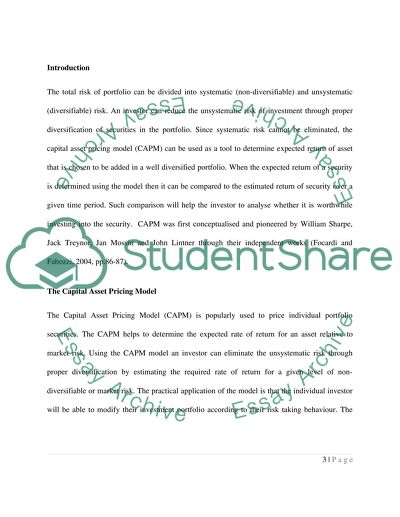Cite this document
(“What Is The CAPM (Capital Asset Pricing Model) And Of What Practical Essay - 1”, n.d.)
What Is The CAPM (Capital Asset Pricing Model) And Of What Practical Essay - 1. Retrieved from https://studentshare.org/finance-accounting/1473493-what-is-the-capm-capital-asset-pricing-model-and
What Is The CAPM (Capital Asset Pricing Model) And Of What Practical Essay - 1. Retrieved from https://studentshare.org/finance-accounting/1473493-what-is-the-capm-capital-asset-pricing-model-and
(What Is The CAPM (Capital Asset Pricing Model) And Of What Practical Essay - 1)
What Is The CAPM (Capital Asset Pricing Model) And Of What Practical Essay - 1. https://studentshare.org/finance-accounting/1473493-what-is-the-capm-capital-asset-pricing-model-and.
What Is The CAPM (Capital Asset Pricing Model) And Of What Practical Essay - 1. https://studentshare.org/finance-accounting/1473493-what-is-the-capm-capital-asset-pricing-model-and.
“What Is The CAPM (Capital Asset Pricing Model) And Of What Practical Essay - 1”, n.d. https://studentshare.org/finance-accounting/1473493-what-is-the-capm-capital-asset-pricing-model-and.


